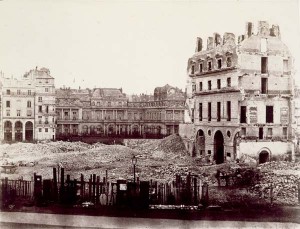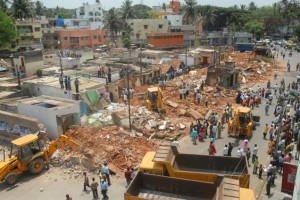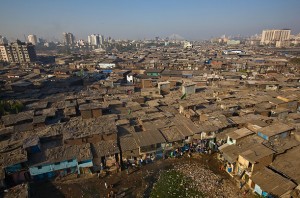One of the re-occurring themes in the readings and discussions in our class has been the boundaries between what we now hesitate to call formal and informal cities. Urban Think Tank’s label for blurring the boundaries between the two kind of cities, which they called Urban Acupuncture, has fascinated me.
A topic which has come up in this week’s readings was the connection between slums themselves; not only blurring the existing boundary, but more importantly, creating a strong network. While slums may seem like random, unorganized organisms, they are actually “the consequence of distorted development.” (Franco) In fact, based on the natural drainage systems in place, one can see that a lot of slums are developed alongside these kinds of natural infrastructure. It is important to recognize that by emphasizing these kinds of infrastructures and creating connections between the slums, they can be transformed from seemingly scattered areas to actual functioning cities. The government is quickly changing it’s role to become a ‘facilitator’ rather than a ‘provider’. (Franco) That being said, it is also curial that the government includes the residents of the slums and creates an atmosphere where both parties contribute to the development. For example, in Indore, the government gave the land residents long term leases and making their stay on the land legal. The residents then went ahead and built their own toilets which connected to the sewage system implemented by the government. The outcome of such collaboration was one where both parties worked together in order to create a connection between the slums, improve infrastructure, and create a more city-like environment. Another aspect of the residents involvement in these projects is that by knowing how certain things work, they are able to pass down the knowledge, work on repairs, and ultimately be more invested in the improvements. According to Slum Networking Along the Indore River makes a really important statement that among the issues of slums, such as health, education, income generation and physical infrastructure, the implementation of physical structure is the most important and effective intervention, with the most direct results. (Franco)
Such infrastructural interventions also create a lot of different kinds of potentials for social interventions too. For example, in the Antonico Creek Urban Project, the government created a canal to better neighborhood sanitation, etc. Next to the canal, the government decided that they would be able to insert programs for pedestrians and cyclists. Immediately, the improved infrastructure allows for a better connection between slums, creates better living standards within each slum, and creates a social infrastructure. (Davidson)
Works Cited
Davidson, Cynthia. “Slum Networking Along the Indore River.” Architectural Design (n.d.): n. pag. Web. 31 Mar. 2013.
Franco, Fernando De M. “Filling the Void With Popular Imageries.” Architectural Design (n.d.): n. pag. Web. 31 Mar. 2013.


